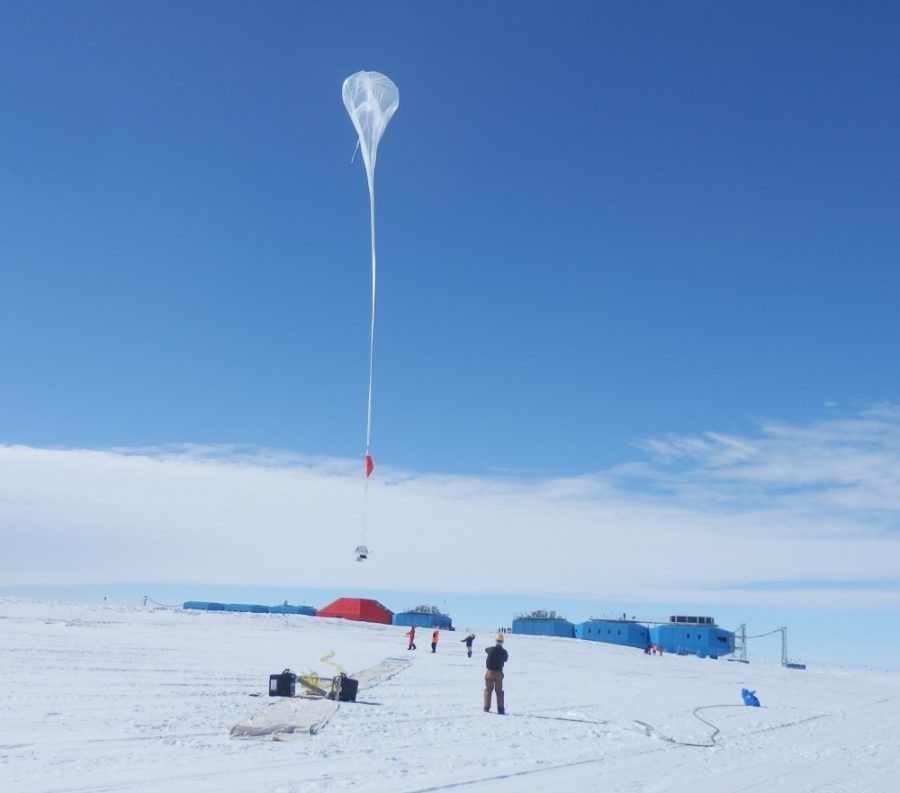NASA selected in late March a new space mission to be led by UA astronomy department and Steward Observatory professor Christopher Walker. The 1oo-day mission will require a lot of GUSTO to succeed.
The mission aims to study interstellar gas and star formation in the Milky Way galaxy and the Large Magellanic Cloud using a balloon-launched upper atmosphere observatory.
The Galactic/Extragalactic ULDB Spectroscopic Terahertz Observatory (GUSTO) project will use a long-lasting balloon to take a telescope and suite of chemical sensors high into the sky in Antarctica in 2021.
The goal of GUSTO is to further our understanding of the origins of the universe.
NASA selected the GUSTO out of two finalists and eight total mission submissions. The selection procedure—part of the NASA Explorers program—was highly rigorous.
“Then they have a whole bunch of engineers, technicians, program managers, accountants and scientists go through it very critically and come up with strengths and weaknesses,” Walker said. “And then 30 people fly in to your university for a site visit. We had an all day meeting and interrogation on our project that lasted from sunrise to sunset.”
The selection process continued beyond the site visit.
“It’s usual that you’ll have to propose a couple of times before NASA selects it because it gives you time to decide if you really want to do it, if it’s technically possible, or can it be done with the cost cap that you’re given,” Walker said. The total cost for the GUSTO mission is $40 million.
RELATED: Mars’ atmosphere a key to its dry surface
The research started with a high altitude balloon launched in Antarctica in 2012 and later in 2016. In the first flight, helium gas leaked from a container due to the loss of pressure and heat as the balloon rose into the atmosphere. The team tried again in 2015, with heaters and more precautions to prevent a leakage, but faced weather issues.
The researchers left the payload in a hangar in Antarctica before being invited to try again in late 2016. Both the 2012 and 2016 launches primarily measured carbon atoms.
“The good thing is in that four-year period, the radio detectors we were using got much better, meaning we got more science done,” Walker said.
The payload consists of a gondola frame with antennae, a telescope and a device used to measure and record carbon atoms. The telescope was reused between the two missions, but the gondola itself had to be rebuilt. Using the telescope, the team is able to manually aim towards the specific area they want to research and evaluate.
“We were there from October to January and we got some good results, and now we’re working on GUSTO, which is a fancier version of this,” Walker said.
GUSTO is unmanned and autonomous, with antennae attached allowing for communication via satellite. The device will record carbon, nitrogen and oxygen through radio waves.
“You can use those three atoms to trace the components and phases of the interstellar medium,” Walker said. “And those atoms act like little radio transmitters which, by themselves, are too faint to detect, but with billions gathered together, they become detectable.”
For example, the researchers will be able to learn if a supernova occurred by measuring patterns in the atoms.
GUSTO will map a large chunk of the Milky Way, and swing 180 degrees around to map the Large Magellanic Cloud over the course of 100 days.
RELATED: Former NASA astronaut to teach online UA course
The Large Magellanic Cloud is a dwarf galaxy that orbits the Milky Way with the characteristics of a young galaxy not too long after formation, making it ideal for studying star formation and the origin of the universe.
“The Milky Way is an example of a more evolved galaxy, so by comparing them, we can understand how star formation changes over all cosmic time,” Walker said.
The balloon will be launched in the Antarctic summer to provide constant solar power for the payload. Other reasons for the chilly launch site include favorable wind patterns that will aid in payload recovery and the lack of overflight restrictions in Antarctica, allowing for freedom in flight and retrieval.
Antarctica is also a place of high elevation and therefore little water vapor.
“Water vapor in the earth’s atmosphere is what sucks up these high-frequency radio waves that we’re trying to detect,” Walker said. “And up there we have 95 percent transmission, which is just as good as going into space and much cheaper.”
GUSTO will help make strides in our understanding of the universe and how it was created.
“The point I like to make is that 4.7 billion years ago we were all the interstellar medium, and the planets and everything on them are a byproduct of the star formation process,” Walker said.
Follow William Rockwell on Twitter.









